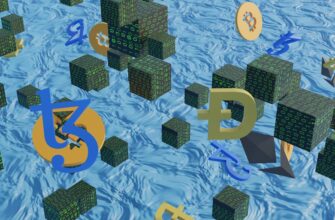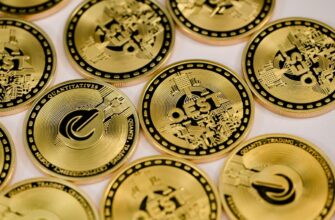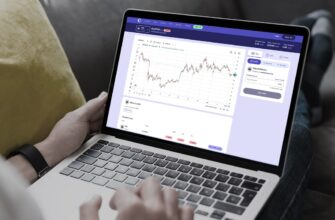Liquidity mining has become a popular method for investors to earn passive income by participating in decentralized finance (DeFi) protocols. When applied to Cardano (ADA), liquidity mining involves staking ADA to support liquidity pools and earning rewards in return. This guide provides a step-by-step breakdown of how to liquidity mine Cardano, including key considerations and frequently asked questions.
## What is Liquidity Mining for Cardano?
Liquidity mining for Cardano refers to the process of staking ADA tokens in liquidity pools to provide liquidity for decentralized applications (dApps) and earn rewards. Unlike traditional staking, liquidity mining often involves locking ADA in a pool to facilitate trading or lending activities. This method allows users to earn additional income while contributing to the network’s stability.
## Step-by-Step Guide to Liquidity Mine Cardano
### Step 1: Choose a DeFi Platform
Select a DeFi platform that supports Cardano liquidity mining. Popular options include PancakeSwap, Uniswap, and other AMM (Automated Market Maker) platforms. Ensure the platform is secure and has a good reputation in the Cardano community.
### Step 2: Set Up a Wallet
Create a wallet to store your ADA tokens. Recommended wallets include Ledger, Trust Wallet, and MetaMask. Make sure to back up your wallet and keep your private keys secure.
### Step 3: Purchase or Earn ADA
If you don’t already own ADA, purchase it through a cryptocurrency exchange or earn it by staking other cryptocurrencies. Ensure you have sufficient ADA to participate in liquidity pools.
### Step 4: Connect Your Wallet to the Platform
Log in to your chosen DeFi platform and connect your wallet. This step verifies your identity and allows you to interact with the platform’s features.
### Step 5: Select a Liquidity Pool
Browse the platform’s liquidity pools and select one that supports Cardano. Consider factors such as the pool’s size, fees, and the type of tokens being traded. Popular pools may include ADA/USDT or ADA/ETH pairs.
### Step 6: Deposit ADA into the Pool
Transfer ADA from your wallet to the selected liquidity pool. This action locks your ADA in the pool, allowing it to be used for trading or lending activities. You will earn rewards in the form of ADA or other tokens.
### Step 7: Monitor and Withdraw Rewards
Keep an eye on your rewards as they accumulate. You can withdraw them at any time, though some platforms may require a minimum holding period. Regularly check for updates on the platform’s terms and conditions.
## Key Considerations for Cardano Liquidity Mining
### 1. Risks Involved
Liquidity mining carries risks, including market volatility and smart contract vulnerabilities. Always research the platform and its security measures before participating.
### 2. Rewards vs. Fees
Liquidity pools often charge fees for transactions. Ensure you understand the fee structure and how it affects your overall returns.
### 3. Time Commitment
Liquidity mining requires minimal active participation, but you must be available to monitor your rewards and manage your wallet.
### 4. Regulatory Environment
The regulatory landscape for DeFi is still evolving. Be aware of any legal requirements that may apply to your activities.
## Frequently Asked Questions (FAQ)
### What is liquidity mining for Cardano?
Liquidity mining for Cardano involves staking ADA in liquidity pools to earn rewards. It allows users to contribute to the network while earning passive income.
### How do I start liquidity mining Cardano?
To start, choose a DeFi platform, set up a wallet, purchase ADA, and deposit it into a liquidity pool. Follow the platform’s instructions for the process.
### Is liquidity mining for Cardano profitable?
Profitability depends on factors such as the platform’s fee structure, the size of the liquidity pool, and market conditions. It is not guaranteed and carries risks.
### What are the risks of liquidity mining Cardano?
Risks include market volatility, smart contract vulnerabilities, and potential losses if the platform is hacked or becomes unstable.
### How long does it take to earn rewards?
Rewards are typically distributed periodically, such as daily or weekly. The frequency depends on the platform’s terms and the volume of transactions in the pool.
### Can I withdraw my ADA at any time?
Yes, you can withdraw ADA from a liquidity pool at any time, though some platforms may require a minimum holding period before withdrawals are allowed.
### Are there any fees associated with liquidity mining?
Yes, liquidity pools often charge fees for transactions. These fees are typically a percentage of the transaction value and are distributed to liquidity providers.
### What happens if the platform is hacked?
If a platform is hacked, users may lose funds if the platform is unable to recover the stolen assets. Always choose platforms with strong security measures and insurance.
By following these steps and considering the key factors, you can effectively participate in Cardano liquidity mining and earn rewards while contributing to the network’s stability. Always conduct thorough research and stay informed about the latest developments in the DeFi space.








